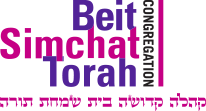Next Year in Freedom
A Passover Teaching from Cooperberg-Rittmaster Rabbinical Intern Marques Hollie
לשנה הבאה בחרות
Next Year in Freedom
Passover is one of my favorite times of year. It’s not my favorite holiday (that honor belongs to Shavuot), but it’s close. I have been, and remain, so enthralled and engaged with the possibilities that Passover offers that I wrote and premiered an excerpt of a musical about it at the 14th Street Y when I was a LABA: A Laboratory for Jewish Culture fellow several years ago. The musical is called Go Down, Moshe, and it combines Negro spirituals, music from the civil rights era, narratives of formerly enslaved people, and traditional Jewish texts to create an expression of Passover that is visceral, embodied, and personal. The intersection of the personal and the ancestral in Passover ritual is at the heart of what makes this holiday so powerful.
We learn from the rabbinic voice of the Mishnah, in Pesachim 10:5, that each person, in every generation is obligated to see themselves, as if they had been personally brought out from Egypt. The Mishnah quotes Exodus 13:8 as proof for this teaching:
“And you shall explain to your child on that day, ‘It is because of what Adonai did for me when I went free from Egypt.”
The idea here is that each of us is the “I”, in this proof text; explaining what G!?d did for us when we went out of Egypt. Yitziat Mitrayim, going out from Egypt, is intended to be a personal experience. Our tradition offers multiple opportunities to remember the exodus from Egypt, such as: when we sing Mi Chamocha, when we recite Kiddush on Friday night, and in the Birkat HaMazon, the after-meal blessing. But when Passover arrives, we make the transition from mentioning the exodus from Egypt to inhabiting it, to bringing it into our bones and into our bodies.
During Seder, we sing the question, ma nishtanah halailah hazeh mikol haleilot, how is this night different from all other nights? We have the standard answers to this question: we eat matzah, we dip our food twice, we recline, and we eat bitter herbs. Each of these responses points to a meta-response to the question, which is that WE are different. This night is different from all other nights because we’ve changed, we’ve shifted, we’ve learned, we’ve grown. And if we are to embody the rabbinic commandment to see ourselves as if we had personally left Egypt, we must acknowledge and honor the ways in which we’ve changed. We need to find, or perhaps insert, ourselves anew into the ancient story of our collective liberation from Egypt year after year.
The ritual of the seder and the order of it in the haggadah offer us so much richness in symbolism and metaphor that can serve as entry points into taking and experiencing the exodus from Egypt personally. As you prepare for Passover and even after it arrives, I want to invite you to consider the various components of the holiday, from the tangible (seder plate, matzah, haggadah, etc.) to the intangible (the four questions, the four children, retelling the exodus from Egypt, etc.) and ask yourself, “Which of these objects and symbols feels most resonant to me right now?”
You may find that resonance in the plagues, the divine disturbances to a ruling class bent on the subjugation and destruction of a people. Or perhaps you’ll find it in the seder plate, the ritual object strong enough to hold the traditional ingredients of our liberation story and flexible enough to make room for other additions to deepen that story or to tell that story differently. Maybe it’s the Hillel sandwich, whose alchemy transforms the symbols of our bondage into the bittersweet experience of moving forward into freedom.
No matter which symbol or symbols are most resonant for you this year, may you be blessed with the knowledge that this story belongs to you and may you see yourself fully in it.
Next year, may we all be free.
